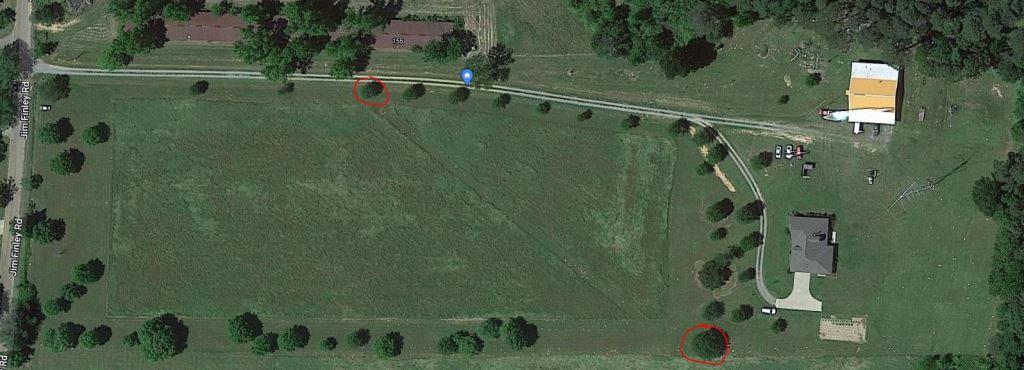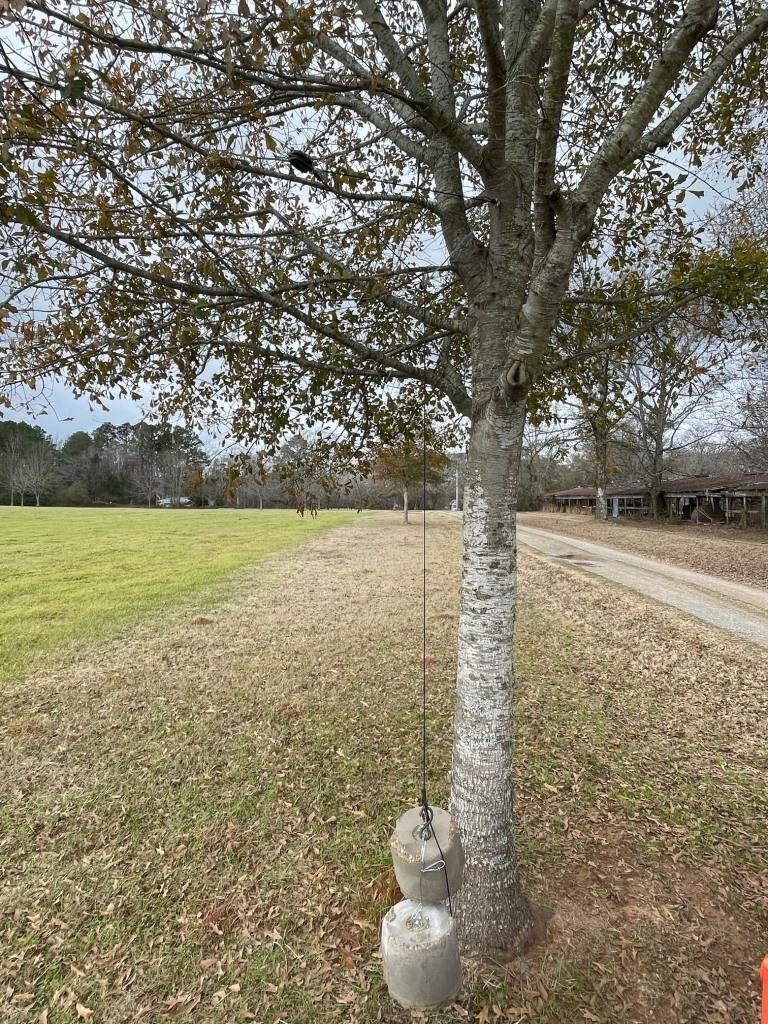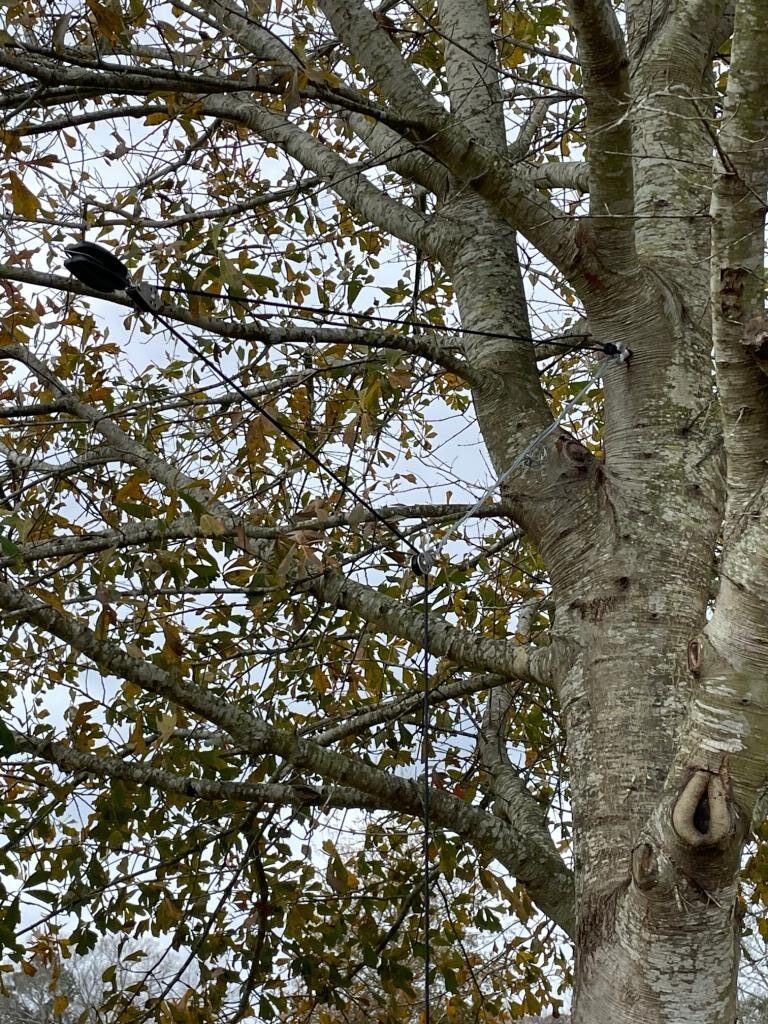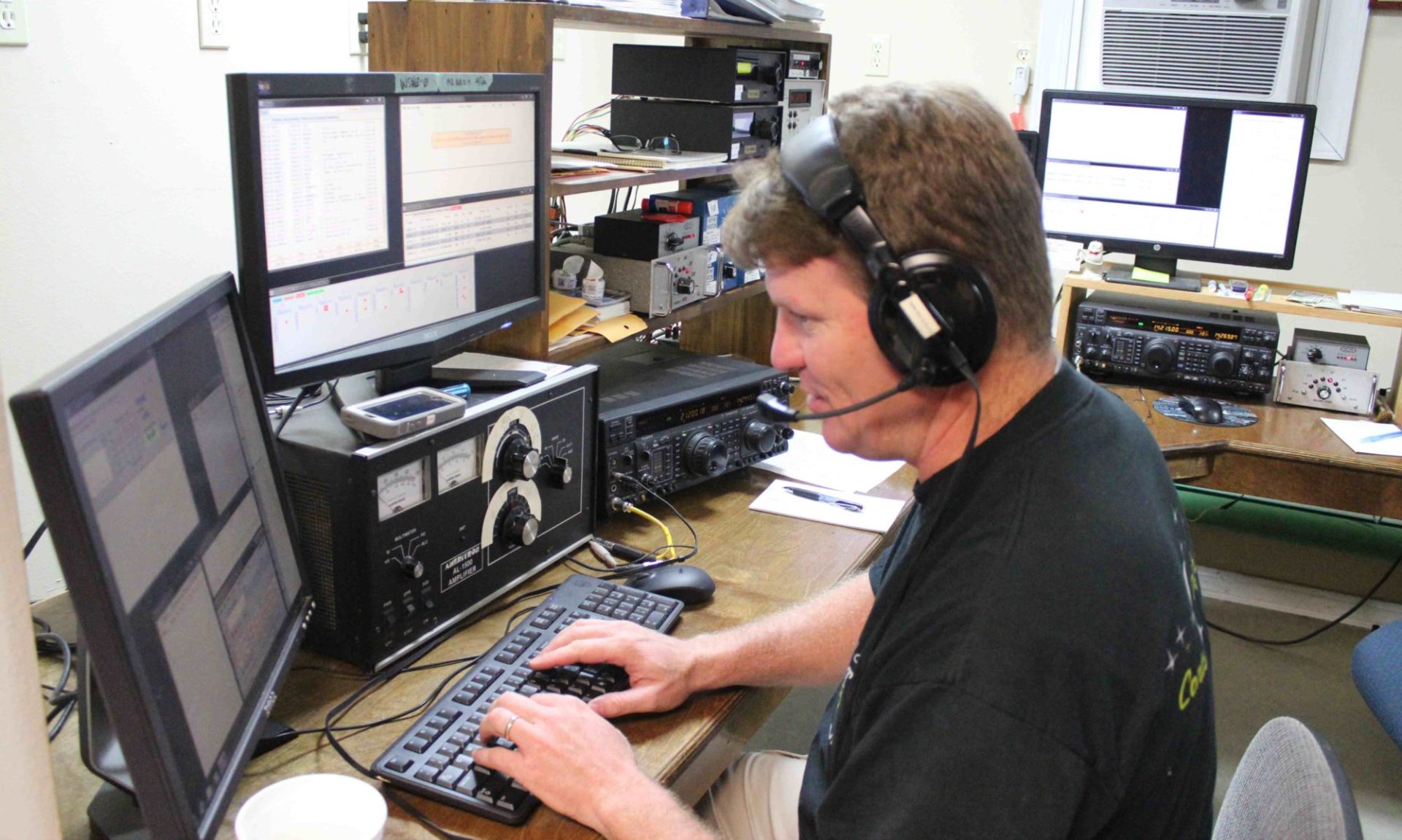1/2/2022 – With the upcoming Bouvet DXpedition, now seemed like a good time to improve my beverage receive antenna for the SE direction. The current SE beverage was 480 feet long, and is run on the same posts, 2 feet above the primary NW beverage.
Several years ago, I planted some oak trees on the north and south sides of my property, which is primarily a pasture. They have grown, and now are adequate to anchor the ends of beverage receive antenna wires. I selected an appropriate pair with a 310/130 heading between them. These trees are 525 feet apart, for an additional 45 feet of length for this antenna.

In the past, I had watched a YouTube video by Steve VE6WZ and his beverage installation techniques. Borrowing heavily from his method, I commenced my work.
At 12 feet above ground level, I drilled a 5/16″ pilot hole to install a 3/8″ hot-dip galvanized eye bolt. At the fixed end, a 3-foot loop of rope and an insulator are attached to the eye bolt.
For the floating end, I began exactly as VE6WZ demonstrates in his video. However, with 80 pounds of counterweight via the single pulley method demonstrated by VE6WZ, the wire was still sagging more than I desired. At this point, I decided to implement a 2:1 pulley block method to multiply the tension to 160 pounds.

17-gauge galvanized steel electric fence wire has a breaking strength, depending on which source for specifications you trust, between 125 and 176 pounds. Thinking that I may be pushing my luck with 160 pounds of tension, I removed 40 pounds of weight, lowering the tension to 80 pounds via the 2:1 pulley block. The entire span is still sufficiently high above the ground. With storms approaching, that’s the end of work for today.

- Additional plans:
- 3 ground rods (1/2″ copper pipe, 3-4 feet long) at both feed point and termination ends
- Soldered, rather than compression ground wire connections to ground rods

“Several years ago I planted some oak trees …” The question could be, did you know what you were going to use them to hold up, and so did you plant them in the right spots at the time?
Thanks for the question OM.
Yes, I knew I was going to use them. And of course, they are planted in the right spots. I added a photo to the post to demonstrate the many options available from my planning efforts when planting these trees 10 to 15 years ago.
73, Scott